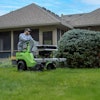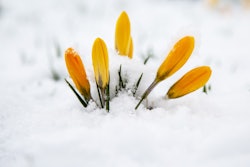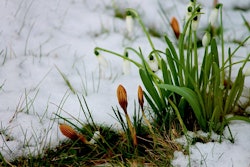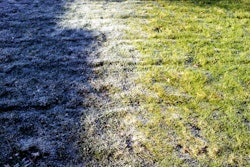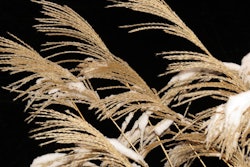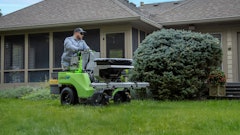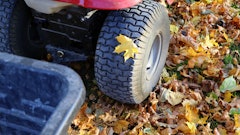
In the South, there may not be months of ice and snow, but there is still a transitional period from winter to spring. Turf and other plant material are coming out of the shorter, cooler days and need attention. Erica Santella, regional technical manager for TruGreen, has provided tips on the main areas to focus on for a beautiful spring lawn.
Mowing – Resist the urge to mow the brown, warm-season grass until it is fully out of dormancy and actively growing. The brown layer of grass provides the growing turf a cushion of insulation against the cold.
Like any engine, lawn mowers work better and last longer with routine maintenance. After a mower sits idle for a period of time, it is best to check the oil, or better yet, give it a complete tune-up. It is also a good time to sharpen the mower blade. A dull mower not only ruins the appearance of the grass, but makes it more susceptible to disease and drought. Make sure to leave the clippings on the lawn this year, as they provide nutrients back into the lawn. Sweeping or blowing clippings back onto the lawn also helps protect local water quality.
Fertilization – A soil test can answer questions about fertilizer nutrient contents and specific types for turfs. It is best to test for pH, phosphorous and potassium at a minimum. The local county extension agent can often provide this service for a small fee and can help better identify the nutritional needs of plant material.
Choose a fertilizer based on the plants’ needs and desired results. For example, a heavily shaded area will often need less nitrogen and more potassium than a turf growing in full sun. It is also important to sweep fertilizer granular off hard surfaces, such as sidewalks and streets, to prevent fertilizer from getting into the local water system.
Irrigation – An irrigation system is essentially outdoor plumbing and important to the health of a turf on a property. It needs regular maintenance to keep it running properly. Now is the time to replace or readjust clogged or broken heads to ensure the water is absorbed into the turf.
Ornamental plants – It is important to prune-off any dead limbs. For example, when azaleas have stopped blooming, you can safely cut them back to rejuvenate them. If needed, carefully apply a fresh layer of mulch, no more than a couple inches deep, and keep direct contact away from the trunk of ornamentals.
Visit a local nursery and see what plants are best suited for the desired area and needs. Make sure to follow the principal of “right plant, right place” so the species chosen gives enjoyment for years to come.
Finally, get ready to enjoy the spring season with a beautiful and healthy landscape.


